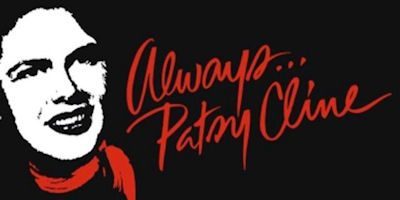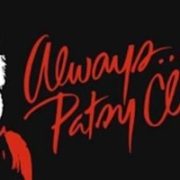ALWAYS…PATSY CLINE
Playing at the Sierra Madre Playhouse
 Although her musical career was already in progress, Patsy Cline didn’t make a splash on the national stage until her appearances on the Arthur Godfrey show in 1957. Before that, her music was only available in places where the audience was deliberately seeking out country-western music. Before that, she dressed in cowgirl outfits hand-made by her mother. Arthur Godfrey’s show brought her, dressed in elegant, sophisticated dresses, into homes across America, as a show heavily viewed by housewives who didn’t listen to country-western, heard her amazing voice on repeated appearances.
Although her musical career was already in progress, Patsy Cline didn’t make a splash on the national stage until her appearances on the Arthur Godfrey show in 1957. Before that, her music was only available in places where the audience was deliberately seeking out country-western music. Before that, she dressed in cowgirl outfits hand-made by her mother. Arthur Godfrey’s show brought her, dressed in elegant, sophisticated dresses, into homes across America, as a show heavily viewed by housewives who didn’t listen to country-western, heard her amazing voice on repeated appearances.
For the next six years, including time out to have two children, Patsy Cline recorded and performed, inspiring other women in music. Her music ranged into the area of pop, rock and gospel, with a little jazz, but largely returned to her beloved C&W. Her influence on Country Western and eventually on Americana music in general was huge, as she broke new ground for women in the field at every stage.
Always…Patsy Cline is a stage play dominated by the music, not quite just a musical revue but close. Other than her backup band, it consists of two actors, The Cline herself and Louise, one of those women at home who became an ardent fan and a correspondent. Over twenty songs are performed as her story unfolds, with only small snippets of Patsy Cline’s life showing through, but those are authentic, based on her words and surviving letters. The radio and television broadcasts, recording sessions, and most importantly, the live show where Louise got to meet Patsy, form the core of the show, and the songs are sung in ways that highlight the moods of the scenes or tell stories on their own about her life and career.
In the portrayals of Patsy and Louise, the Sierra Madre Playhouse found a pair of excellent actresses. Cori Cable Kidder has an excellent voice and does a great job of portraying The Cline at the peak of her career. She can belt, croon or rock at a moment’s notice, all without mussing a hair [which is apparently a truly amazing wig]. Because we only get glimpses into her head, the story is told through Louise, played by Texan Nikki D’Amico in a delightful over-the-top style. Louise has a huge heart and a sense of outrageousness to match, which comes through in the telling of the story. Ms. D’Amico does a great job in this needed role.
A live band was essential to this show, and they did an excellent job. Some of you may recognize the name Frank Hoppe, who is part of the band for some performances. Music director Sean Paxton, a winner of the Harold Arlen award from ASCAP, has done a great job of keeping this difficult show from going off the tracks.
https://www.youtube.com/watch?v=K-wJNpWgss8
The play’s director, Robert Marra, used the confines of a 99-seat theater to give the show the intimacy that would be more difficult in a larger theater. Whether Patsy is singing over the air on the Grand Ol’ Opry show or in Louise’s kitchen, the songs come through clearly, and the scenes are clear.
Patsy’s career, and the careers of two other musicians [Hawkshaw Hawkins and Cowboy Copas], were cut short by the poor judgment of her manager/pilot. Ironically, circumstances had caused Patsy Cline to possibly view flying as safer than driving. She had recently been involved in a traffic accident in which there were fatalities, and she was flying away from performing in a benefit for a radio personality who had died in a different car crash. This ending to her life, which could have turned into a maudlin mess, is handled very well in this staging, and the cast even manages to send the audience out enjoying her music, rather than crying over her ending.
The play runs on weekends through late September.
Nick Smith is President of the Pasadena Folk Music Society and a performing storyteller.













